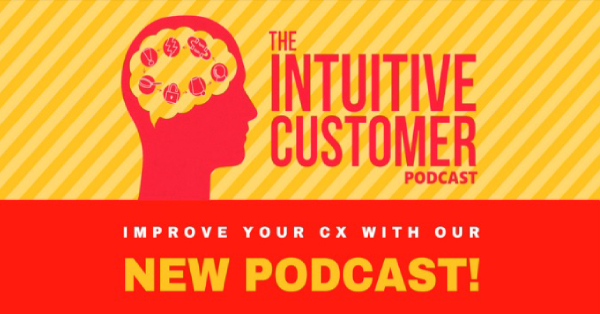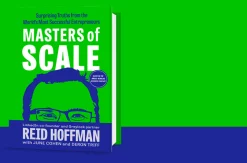The Intuitive Customer: 7 Imperatives For Moving Your Customer Experience to the Next Level, Book by Colin Shaw and Ryan Hamilton, Review
About The Book:
Building on the work of Daniel Kahneman (Thinking Fast and Slow), Dan Ariely (Predictably Irrational), Shaw, and Hamilton provide a new understanding of how people behave, explain what it means for organizations who really want to understand their customers, and show you what to do to create exceptional customer experiences.

Editorial Reviews:
About the Author:
My Review:
Appearance:
I’ve received a hardcover of the book, lightweight, good size in my hand, with great quality of paper and printing.
I bought these books (The Intuitive Customer, The DNA of Customer Experience, Kissinger the Negotiator) as used books since I was tight on my budget and I really wanted to read them.
Content:
The Intuitive Customer is a book about CX or customer experience which is really important for businesses of all sizes.
The author begins with Moving Your Customer Experience to the Next Level, Requires New Thinking, and explains why Flat earthers in organizations are stuck under the glass ceiling. because they don’t know or they don’t realize how people (customers) make a decision and justify it.
There are a lot of great examples to prove what authors are claiming about customer behavior and decision-making triggers, i.g. There is a big difference between what customers say and do and Disney knows when they ask customers what they want to eat at the park, they say they want an option of salad. However, Disney also knows people don’t pick the salad option at theme parks but instead they choose hot dogs and hamburgers.
You’ll find other types of examples, and the author’s experience along with studies and researches from universities and institutes in customers behavior, emotions, decision-making reasons, etc. I’ve learned the value of emotions, heuristics, and memory in customer loyalty.
An interesting example of how people think (make decisions) comes from The advertising on TV for the betting market in the United Kingdom, Ladbrokes, a well-established betting company, wanted to take a different approach and They employed BBH, one of the world’s top advertising agencies, to make a new advert for them. This new ad is called “This is the Ladbrokes Life.” BBH’s creative idea exploited the fact gamblers fall into different categories or personas, which are :
The Ladbrokes/BBH Gambling Personas
Name: Professor Quality: Knowledge and the other, Name: Gut Truster Quality: Intuition/Instinctiveness
with the details of explaining how and why these 2 types of personas have different values of decision making.
One of the sections that I really liked is about “cognitive depletion”, which the author covered professionally and teaches you how to take advantage of it in order to drive customer loyalty. indifferent sections and examples, the author also is trying to remind you about their services such as “CRM” and/or changes in your company’s policy e.g. “clear desks policy” which I (personally) didn’t find professional especially in this knowledgeable book, although nowadays we’re finding this type of ads in a lot of new publications and books.
In the end, I recommend, not just this book to you but also a free downloadable series of podcasts with Colin Shaw and Professor Ryan Hamilton, which have a lot of great info about CX. you may download the podcasts on http://beyondphilosophy.com/podcasts.
Did you Know (Book Articles):
– Motivation is one of the things that drives whether people use a heuristic or a systematic, rational system approach to evaluating things. To figure out how customers evaluate your offer and experience, ask yourself:
- • Is your interaction with customers that are motivated by the product category, and that are experts, connoisseurs, or hobbyists? If so, then “easy” is less important to them.
• Is your interaction motivated by a customer’s need to get it done along with a dozen other to-dos, or by the need to purchase a product or service to which they don’t devote much thought or with which they are not personally involved? If so, then making the interaction easy is more important to them, as they will rely on simplifying heuristics.
Ryanair (a successful budget airline in the UK CEO, Michael O’Leary, said the following about Customers (in public!):
• On refunds: “You’re not getting a refund so **** off. We don’t want to hear your sob stories. What part of ‘no refund’ – don’t you understand?
• On the Customer is always right: “People say the customer is always right, but you know what – they’re not. Sometimes they are wrong, and they need to be told so.”
• On charging passengers to use the restrooms/toilet: “One thing we have looked at is maybe putting a coin slot on the toilet door so that people might actually have to spend a pound to spend a penny in the future. If someone wanted to pay £5 ($7.50) to go to the toilet, I would carry them myself. I would wipe their bums for a fiver.”
• On the in-flight experience: “Anyone who thinks Ryanair flights are some sort of bastion of sanctity where you can contemplate your navel is wrong. We already bombard you with as many in-flight announcements and trolleys as we can. Anyone who looks like sleeping, we wake them up to sell them things.”
-As Einstein said:
The definition of insanity is doing the same thing over and over, but expecting different results.
The old thinking that all an organization needs to do is to focus on improving the quality, product, price, place, and promotion of their products and services is no longer good enough… By focusing on these alone, you are focused on the “ what ” of Customer Experience. However, organizations need to put an equal focus on “ how ” the Customer Experience is delivered. So to be very clear: you need to understand both the “what” and the “how.”
When looking at how we need to bear in mind that all organizations should be aspiring to understand and serve the Intuitive Customer. It is the Intuitive Customer who drives purchase decisions, even those that seem purely rational. To get a deep understanding of the Intuitive Customer, you need a deep understanding of how and why your customers do things. This understanding is at a superficial level in most businesses today. The Customer Experience is much more complex than just selling products to someone.
-The Intuitive System
The Intuitive System (or Stanovich and West’s System 1) is the part of the mind that tends to jump to conclusions. This mental process is automatic, and not under your conscious control. So when you answered the questions above, some of the answers were automatic or intuitive.
For example, when asked if you prefer being rich or poor, I am sure many of you automatically selected rich, using System 1 or what we call your Intuitive System. We do not have to “think” to make this decision and use the Intuitive part of our minds. The Intuitive System is running all the time, so it’s with you, processing information and suggesting actions whether you are at home relaxing, at the store buying groceries, or at work performing complex surgery.
Have you ever found that sometimes you make a decision and then, if challenged, find it difficult to explain how you got to this decision? When you see it happen, you will hear people say:
“It’s obvious.”
“I just know this is the right thing.”
“My gut tells me this is right.”
“All my experience tells me I should do this.”
For example, both of your authors love Apple products. Why? Because they are easy to use. What makes it easy? Now we start to struggle to explain. We say, “Just the way the navigation works, it seems to know what I want to do next …” As we write, these reasons seem superficial and easy to dispute by anyone looking at this from a Rational System (System 2) perspective.
Despite this fact, your authors’ intuitive brains have made the decision that Apple is easy. Now, you may disagree! Maybe Apple is not for you. That opens a whole separate subject we will be exploring later in the book on segmentation and personas. But we’ll get to that later. The key here is that some things are hard to explain because we make the judgment or do them automatically. Consider walking. Walking is a complex behavior that your mind has converted with practice from an effort-driven, conscious behavior to an automatic, unconscious one.
When a child is learning to walk, even the slightest distraction causes them to lose their balance and topple over. If you are ever around a newly mobile toddler, try calling out their name and watch them immediately plop down on their bums. Yes, yes, that seems like a cruel thing to do to a baby, but you have to understand you will be doing it in the name of science. Over time, walking becomes so ingrained into the Intuitive System it can be hard to wrest control back over to the Rational System.
Your Intuitive System is well-practiced at walking. But if you try to think about it, you miss your stride. Have you ever tried to walk while being filmed? Or while on stage? The extra attention you pay to put one foot in front of the other makes your walking worse. The Rational System does nothing except cause problems, in this case. Hence you will now start to understand the need for Imperative 3: Understand that customers’ minds can be in conflict with themselves.
We can’t observe the Intuitive system through introspection (trying to look at our thoughts), however, we can observe its outputs through our behaviors. Herein lies a problem for organizations. You might see a customer behaving a certain way as a result of their Intuitive System, but not know why.
And as we learned in the last chapter, the customers don’t even know why it’s happening themselves (even though they think they do)! A wine store tested how music might influence sales. 2 On a day, they played classical music from French composers while customers shopped. On different days, the store played just music with strong German associations. Guess what happened to the sales of French and German wine? On the days they played French music about 80 % of customers bought French wines.
On the days they played German music more people bought German wines than French wines. If you asked the customers why they bought the wine, they didn’t say, “Because they had been playing French music.” Instead, they might say, “We hadn’t bought this for a while so decided to give it a go.” customers’ behavior was altered without their knowing anything was influencing them at all. This effect is the Intuitive System in action.
Some part of these customers’ minds was working on processing that music and retrieving memories that were relevant to it – preparing the person to respond quickly in case that information should be needed. The conscious mind – the Rational System – doesn’t even know that this work is going on beneath the surface. Instead, all these memories, drives, and desires pulled up by the Intuitive System push up against the Rational System.
Without knowing it, our behavior is influenced by these subtle cues and we end up buying the German wine. When asked about it later, the Rational System recognizes that it would be crazy to have purchased wine based on the music playing in the background. So the Rational System whips up a quick story about why we did what we did. It all makes perfect sense in retrospect.
I write my reviews on Amazon, 3ee, Goodreads, Librarything, and Social Media such as Facebook, Instagram, Twitter, Linked In, Telegram, and Google+.
If you also have read this book, please share your review below, we greatly appreciate your comment, and let’s talk about it!



